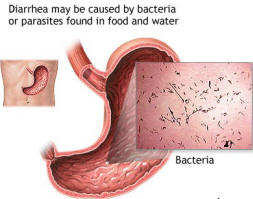- Home
- Editorial
- News
- Practice Guidelines
- Anesthesiology Guidelines
- Cancer Guidelines
- Cardiac Sciences Guidelines
- Critical Care Guidelines
- Dentistry Guidelines
- Dermatology Guidelines
- Diabetes and Endo Guidelines
- Diagnostics Guidelines
- ENT Guidelines
- Featured Practice Guidelines
- Gastroenterology Guidelines
- Geriatrics Guidelines
- Medicine Guidelines
- Nephrology Guidelines
- Neurosciences Guidelines
- Obs and Gynae Guidelines
- Ophthalmology Guidelines
- Orthopaedics Guidelines
- Paediatrics Guidelines
- Psychiatry Guidelines
- Pulmonology Guidelines
- Radiology Guidelines
- Surgery Guidelines
- Urology Guidelines
India continues to be hotbed of diarrhoeal deaths: Lancet Study

According to a study published in the Lancet - Journal of Infectious Diseases, India and Nigeria combined had 42 per cent of the 499,000 global under-five deaths in 2015 due to diarrhoea. With more than 100,000 under-five deaths due to diarrhoea in 2015, India continues to be a hotbed of diarrhoeal deaths in the world, suggests this research.
Diarrhoea caused more than 1·3 million deaths globally in 2015 and was the fourth leading cause of death among children younger than 5 years. The Researchers estimated diarrhoeal mortality by age, sex, geography, and year using the Cause of Death Ensemble Model (CODEm), a modelling platform shared across most causes of death in the GBD 2015 study. The two leading risk factors for diarrhoea—childhood malnutrition and unsafe water, sanitation, and hygiene—were used in a decomposition analysis to establish the relative contribution of changes in diarrhoea disability-adjusted life-years (DALYs).
The burden of disease is greatest in low-income populations with poor access to safe water, sanitation, and urgent medical care. In addition to this acute infectious diarrhoea is also a common cause of outpatient visits and hospital admissions in high-income regions and is an important health problem globally.
The Global Burden of Diseases, Injuries, and Risk Factors Study 2015 (GBD 2015) provides an up-to-date analysis of the burden of diarrhoeal diseases. This study assesses cases, deaths, and aetiologies spanning the past 25 years and informs the changing picture of diarrhoeal disease worldwide. The study also revealed that at the global level, deaths due to diarrhoeal diseases have decreased substantially in the past 25 years, although progress has been faster in some countries than others. Between 2005 and 2015, the number of deaths due to diarrhoea decreased by 34·3 per cent among children younger than 5 years and decreased by 20·8 per cent among all ages.Under-five mortality from diarrhoea was highest in sub-Saharan Africa and south Asia.
Rotavirus was the main cause of diarrhoeal death for children, causing 146,000 deaths in 2015 despite mortality rates reducing by 44 per cent since 2005, the study said.
The authors noted that this is the only cause that has seen a reduction and this is likely to be due to the rotavirus vaccine, which had been introduced in 91 countries by March 2017.This finding promted them to suggest that the development of further vaccines should be attempted like against cryptosporidium, which is the second biggest cause of diarrhoeal death for children under five, causing 60,400 deaths in 2015) and has few treatment options.
At the global level, deaths due to diarrhoeal diseases have decreased substantially in the past 25 years, although progress has been faster in some countries than others. Diarrhoea remains a largely preventable disease and cause of death, and continued efforts to improve access to safe water, sanitation, and childhood nutrition will be important in reducing the global burden of diarrhoea.
You can read the Lancet Study By Clicking on the following link
http://www.thelancet.com/journals/laninf/article/PIIS1473-3099(17)30276-1/fulltext

Disclaimer: This site is primarily intended for healthcare professionals. Any content/information on this website does not replace the advice of medical and/or health professionals and should not be construed as medical/diagnostic advice/endorsement or prescription. Use of this site is subject to our terms of use, privacy policy, advertisement policy. © 2020 Minerva Medical Treatment Pvt Ltd